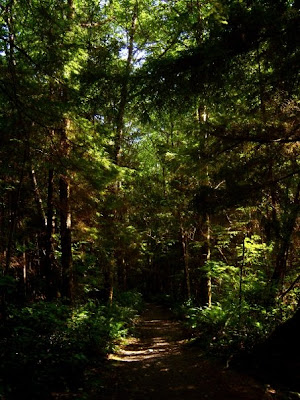(map: http://www.olympic.national-park.com/map.htm)
Olympic National Park is located on the Olympic Peninsula in the state of Washington. What makes Olympic National Park so beautiful and interesting to visit is the fact that it consists of part of the Pacific coast, the Olympic Mountains, and even some temperate rain forest, including the Hoh Rain Forest and the Quinault Rain Forest. In this area, the climate is wet and temperate, and annual precipitation is usually about 150 inches (http://www.olympic.national-park.com/), due to the fact that it is right next to the Pacific Ocean. Most of the precipitation in the mountains is in the form of snow, but the rain forests encounter mostly rain. The temperate rain forest and Olympic Mountains are some of the wettest places in the United States. Directly to the east of the mountains, however, there is a rainshadow. The town of Sequim gets less than 20 inches of precipitation per year (http://www.olympic.national-park.com/).


(Average Annual Precipitation in Washington, map and legend: http://content.lib.washington.edu/cmpweb/resources/map-rainfall.html)
An interesting fact about the area near Olympic National Park:
The tiny town of Forks, Washington is the basis for the Twilight saga, by Stephenie Meyer. It is located on the Olympic Peninsula between the larger portion of the Park and the coastal region. So why did Meyer choose Forks as the setting for her teen vampire romance novel? The amount of rain and lack of sunlight. Vampire skin (according to Meyer) sparkles in the sunlight, so the vampire family, the Cullens, had to choose somewhere to live that had very few sunny days.
Sources:
The Pacific Northwest Olympic Peninsula Community Museum. Web. 8 Dec 2010. <http://content.lib.washington.edu/cmpweb/index.html>.
Uhler, John William.
Olympic National Park. Web. 8 Dec 2010. <http://www.olympic.national-park.com/>.









